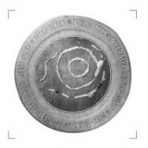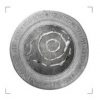PH.D. RESEARCH
ON GOING
Giulio Poggi: Ph.D. (University of Siena)
Title: “Airborne LiDAR for the study of the Medieval landscape of the Colline Metallifere”
This research proposal aims at detecting and defining, through the analysis of airborne LiDAR (ALS) data, the specific anthropogenic and natural elements of the territory of the Colline Metallifere Grossetane, which are historically connected to the exploitation of natural resources coming from agriculture, mining activities, forest harvesting and lagoon exploitation. Starting from a preliminary selection of the most significative and representative samples of the territory (mountain and hilly areas, lowland and lagoon), the peculiar elements of each sample will be mapped and analyzed in relationships with the locations of the resources, the infrastructures and the settlement patterns, which have so far been detected by the several historical and archaeological investigations conducted over the last 30 years in this territory
Luisa Russo: Ph.D (University of Siena)
Title: “Raw, purified and semi-purified ceramics: production, function and circulation in a territory of south-western Tuscany. Colline Metallifere and neighboring territories between the 8th and 11th century”.”
Moving on a typological basis now consolidated, this research proposes an update of the medieval pottery panorama, through the study of the morphological evolution of manufactured products and the creation of well-defined trends in order to refine the diachronic scanning of the types produced
COMPLETED
Davide Susini: Ph.D. geoarchaeological research (University of Siena)
Title: “Geoarchaeology of Medieval Landscapes between the Colline Metallifere and the Tyrrhenian Sea (ERC nEU-Med Project)”
The Ph.D project aims to investigate the geomorphological evolution of the medieval landscape extending from the Colline Metallifere to the Tyrrenian coast, following the Cornia and Pecora river valleys, and to analyse the syn-post depositional dynamics involved in the formation processes at medieval sites of Vetricella, Carlappiano and Cugnano.
These studies will eventually provide useful information to assess how, when and why the landscape changed and the relationships with human activities and settlements and natural dynamics.
Arianna Briano: Ph.D. Archaeological research (University of Siena)
Title: “The sparse glazed pottery in the early medieval Tuscany: production, history and distribution”
The aim of the research is to define the presence and the chronology of sparse glazed ceramic production centers in Tuscany. The materials from the stratigraphic contexts of Donoratico castle will be analyzed, because the site returned an exceptional amount of this pottery. Another objective will be the study of the distribution of the sparse glazed pottery by typological and formal observations, associated with specific archaeometrical and comparative analysis of the doughs from sites in the Colline Metallifere and in other part of Tuscany. The analysis will be based on petrographic and chemical methods that will allow to identify groups of doughs from different productions.
COMPLETED THESES
Marta Rossi: Master’s degree in Archaeology (University of Siena)
Title: “Reconstruction on forest vegetation in Rocca degli Alberti (Monterotondo Marittimo)”
The research has allowed for the reconstruction of the most significant vegetation aspects linked to the history of the medieval settlement in the geographical area of southern Tuscany’s Colline Metallifere. This topic was investigated starting with the analyses conducted upon the carbon samples from the Rocca degli Alberti site (Monterotondo Marittimo), a medieval settlement with a strong agricultural vocation; the results were later discussed from the broader perspective of a general summary, together with the archaeobotanical data from other contemporary sites in the Colline Metallifere: Rocchette Pannocchieschi, Miranduolo, Campiglia Marittima and Cugnano.
Alessio Grazzi: Master’s degree in Archaeology (University of Siena)
Title: “Anthropological study on the burials from Vetricella(GR) and Rocca di Scarlino(GR)”
The research focuses upon the study of bones from the Rocca di Scarlino identified during the 1983 excavation campaign, in addition to the new burials discovered at the Vetricella site during the latest excavation campaign, from September to October 2016. The material obtained from the Rocca, which is yet to be dated (though likely from the 15 century) and remains unpublished, is fragmented and cannot be attributed to individual burials. Due to the context of the Vetricella site, the burials can be preliminarily attributed to a 10 century phase (as per the radiocarbon indications). The main purpose of the research is to determine the age of death, the sex, and the various bone diseases that characterize the individuals, using osteometric boards, measures, and callipers.
Stefania Scapolaro: Master’s degree in Archaeology (University of Siena)
Title: “Anthropological study of the burials from the loc. La Pieve”
The research focuses upon the anthropological study of a context consisting of 20 individuals from the “La Pieve” site, located near Scarlino. The site, which was excavated in the mid 2000s by the Archaeological Superintendency of Tuscany, and has been partially published, has been dated to 9/10 century thanks to radiocarbon analysis. The main purpose of this initial work phase is to clean and assemble the finds, and to determine the sex, age and pathologies of the individuals, even derived from physical stress. The study of the finds from “La Pieve” may provide for interesting comparisons with the data from the graves being studied from the Vetricella site.
Mirko Buono: Master’s degree in Archaeology (University of Siena)
The research uses the methodologies of digital photogrammetry and 3D modeling to propose 3D reconstruction of Carlappiano during the 12th and 13th centuries, as hypothesized following the multidiscplinary analyses that studied in the site. Through the renderings of the 3D scene, Carlappiano is proposed as a critical site for the management and storing of the salt produced in this part of the Val di Cornia valley.
Isabella Carli: Master’s degree in Archaeology (University of Siena)
Title: “Understanding the ancient settlements and production activities in the area of Vetricella (Scarlino Scalo, Grosseto, Tuscany) through the integrated use of traditional and experimental prospection techniques: topographic survey, geophysical and geochemical prospections”.
In order to expand and specify what we already knew about the ancient settlements and production activities located around the early medieval site of Vetricella, we studied a 150 hectares area using a series of methods. Specifically, we combined a preexisting aerophotographic interpretation research with the regional LiDAR data, with a topographic survey and also with geophysical and geochemical prospections. As for the latter two, we applied magnetometry and an experimental prospecting method based on the use of a portable XRF. As a result, we obtained a better understanding of the function of some of the sites which lived contemporary to Vetricella, namely a possible small village and burial area and some places hypothetically involved in iron production. We were also able to identify some features of past natural landscapes.
Sofia Scafati: Master’s degree in Archaeology (University of Siena)
The research focuses on ceramics without coating coming from the site of Vetricella (Scarlino,GR). The purpose of the elaborate is to deaw up a catalog of the most attested form in the site, to quantify the ceramic types present and to identify the chronology.
Davide Intermite: Master’s degree in Archaeology (University of Siena)
Title: Georesources and local productions in the Early Middle Ages. Archaeometric analysis on pottery finds from “Colline Metallifere”
The research focues on an archaeometric analysis aimed to comparing the ceramic mixture and the raw material, in order to define the origin and the possible use of local resources. The chronological range of this research is between 8 and 10 centuries.
Letizia Bonelli: Master’s degree in Archaeology (University of Siena)
Digital photogrammetric processing of historic aerial photographs (1938-41) for the realization of “historical” digital terrains models. The models are evaluated in comparison with recent DTM to asses the contemporary anthropic impact (industrialization, intensive agriculture, mining activities) on the archaeological heritage.
Sofia Iacopini: Master’s degree in Archaeology (University of Siena)
This thesis focuses on the metallurgical production in the territory of Massa Marittima analizing the archaeological data, historical sources, cartography and with the support of geologic map and archaeometric data. The main goal is to reconstruct the late-medieval production events of a site in the Colline Metallifere district.
Giorgia Guarino: Master’s degree in Archaeology (University of Siena)
Title: The tower of the site of Vetricella (Scarlino, GR): genesis and diffusion of a building typology in the Italic Kingdom between IX and XI century
The thesis will focus on the study of the rural towers in wood and mixed material built between the 9th and 11th centuries within the territorial area of the Italian Kingdom: taking as a reference point the archaeological evidence identified at the site of Vetricella referable to the presence of a tower, whose first installation would date back to the middle of the 9th century. Through the development of a database, we will proceed to research and filing of evidence that have similar characteristics to the tower mentioned above, also trying to determine the extent of the involvement of public power about the construction of towers during the time frame under consideration.
Luca Turchi: Master’s degree in Archaeology (University of Siena)
Taking the Vetricella site and its morphological-structural characteristics in the chronological period between the middle of the 9th and the middle of the 10th century (Periods II and III) as a term of comparison, the thesis aims to trace, through a Europe-wide research, sites similar to it in terms of chronology, morphology, present structures and status. The aim of the thesis is to trace a functional characterization of the Vetricella site in the chronological reference period and to elaborate a database containing all the sites analyzed and the main information related to them.
Damiano Panada: Master’s degree in Archaeology (University of Siena)
Title: Early medieval Lucca: critical review and database of historical and archaeological research
The work has produced a GIS-based urban topography of the city based on published (historical and archaeological) information from the early medieval and medieval period. To obtain this result the edited news were organized in a database that was the starting point for the elaboration of explanatory maps and graphs. The archive is structured for single news (a single excavation or a single documentary news). For each one is provided the position in the city, if known, the chronology, the typology and a short description. Each record thus created is associated with the appropriate bibliographic reference. The database was the basis for the creation of a series of topographic maps obtained through the use of the QGIS software.
Damiano Panada: bachelor’s degree (University of Siena)
Title: Medieval salt pans in the middle Tyrrhenian: archaeology of a diachronic production. Data from the Carlappiano site
The central theme of the thesis is the production of salt, a resource that has accompanied man throughout its history. Various ways have been devised over the millennia to obtain this material. In this thesis will be analyzed the production in saline. The thesis work, after collecting the available data for the Roman Age, the Middle Ages, the Modern Age and the Contemporary Age of the area between Vada and Ostia (Middle Tyrrhenian coast), analyzes the historical development of solar salt pans and their characteristics in different historical periods, identifying similarities and differences. The data are then compared to the results obtained from the excavation of Carlappiano (a site investigated within the nEU-Med project), which was able to document the remains of a salt pans of medieval times (XII-XIII century).


